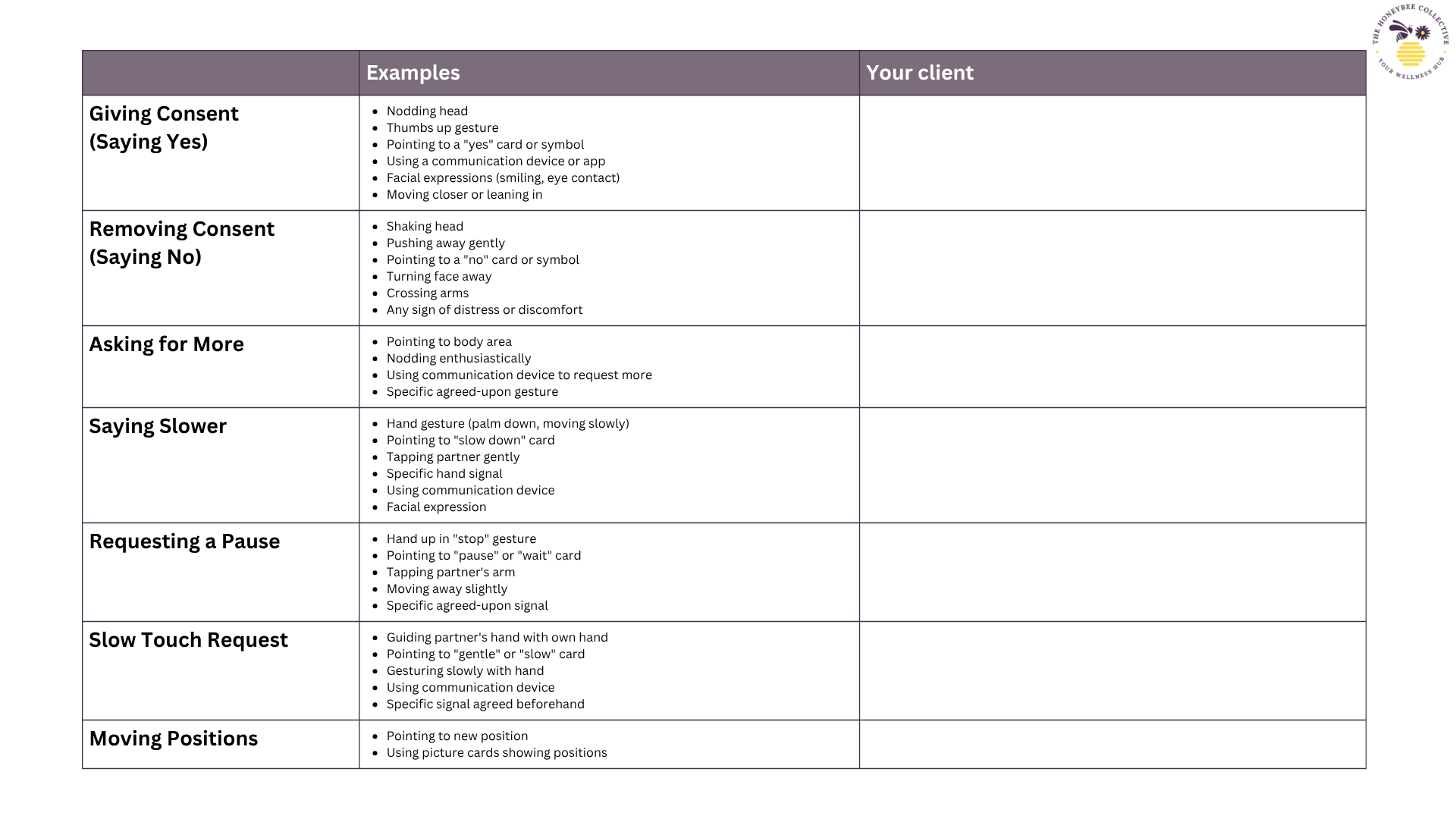Communicating Consent: A Guide for Non-Verbal Clients

This guide helps support workers and clients establish clear communication methods to replicate for consent during intimate situations.
Think about how you see your client communicate or adapt these options to suit your client's individual communication style and abilities.

Important Reminders
- Establish and practise these signals together when not in an intimate situation
- Make sure both people clearly understand each signal
- Keep communication cards or devices within easy reach
- Check in regularly by asking "Is this okay?" and waiting for response
- Remember to include how silence or no response can be understood for your client
- Watch for non-verbal signs of discomfort (tension, flinching, looking away). Document these as part of the consent signals
- Stop immediately if any "no" or "stop" signal occurs
Key principle: Consent must be clear, voluntary, and ongoing. When in doubt, pause and check in.
Learn in a space where your questions are welcome
Join live sessions or watch on demand — all created by professionals who understand the real-world challenges of exploring sexuality, identity and connection.
- Sexuality & identity
- Consent & communication
- Relationships & intimacy
- Confidence & self expression
- Disability & sexual wellness
- Support & education for carers



